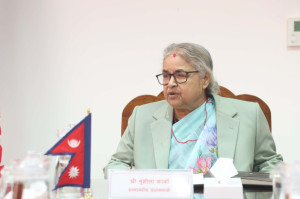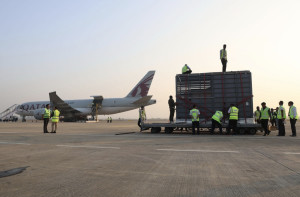Columns
Closing the global childcare gap
The pandemic taught high-income countries a valuable lesson about the importance of childcare.
Megan O'Donnell
When Covid-19 lockdowns began, the importance of affordable childcare suddenly became a lot clearer to many more people, especially working women. Last year, women spent three times as many hours as men providing additional unpaid childcare, losing an estimated $800 billion in income as a result. The gender gap in childcare provision is even wider in low- and middle-income countries. In India, for example, women provided ten times as much unpaid childcare as men.
Since the start of the pandemic, the world’s wealthiest countries have sought to strengthen their domestic childcare infrastructure and broaden access. But if these countries truly want to improve the economic outlook for women globally, they must invest in childcare programs abroad, too.
Even before the pandemic, quality childcare was widely accessible in many high-income countries. Canada gives families sizable monthly allowances to subsidise the cost. Iceland provides universal preschool, and Denmark allows new parents to shorten their work hours while keeping their jobs, salaries, health care, and other benefits. Swedish parents are entitled to a combined 480 days of leave at around 80% pay, which can be used at any point until their child’s eighth birthday.
Now, these countries are taking further steps. The United States contributed $53 billion in pandemic relief to help daycare centers stay open. Australia has invested A$1.7 billion ($1.2 billion) in childcare subsidies and lifted the cap on financial assistance for childcare for working families. And Canada is discussing lowering the cost of childcare to $10 a day.
But while wealthy countries focus on their own childcare infrastructure, access to care remains difficult in low- and middle-income countries. Globally, there is no viable option for childcare for over 40% of preschoolers. In low- and middle-income countries, that number increases to 80%. Compared to children in high-income countries, children in low-income countries are nearly five times less likely to have childcare available.
Although inadequate childcare systems have taken on new significance during the pandemic, this crisis is not new. And when access to childcare is scarce, women pay a far higher price than men do. In 2018, more than 600 million working-age women were unable to accept paid employment due to childcare responsibilities; only 41 million men cited the same reason for staying out of the workforce.
An upgrade in childcare infrastructure in low- and middle-income countries could have a major effect on women’s economic well-being. With childcare support, more mothers, grandmothers, and sisters can accept full-time, quality jobs, rather than struggling, as many women do now, to balance childcare responsibilities with paid work and school. Investments in childcare also create new opportunities for women (and men). The World Bank predicts that meeting childcare needs in low- and middle-income countries would create 43 million jobs.
Likewise, research by the International Monetary Fund has shown that when more women work, economies expand, productivity rises, economic diversification increases, and income inequality falls. Furthermore, gender equality in the labor market is good for business. More employment and leadership opportunities for women leads to greater organizational effectiveness and growth.
An increase in women’s formal employment would benefit the global economy as a whole, but lower-income countries are limited in their ability to pursue this agenda alone. Wealthy countries must help realise the potential of women’s economic participation, and that means acknowledging that quality, affordable childcare solutions are important everywhere, not only at home. Of the $40 billion committed at the 2021 UN Women Generation Equality Forum to addressing gender inequalities, just $100 million (from Canada) went to address care constraints in low- and middle-income countries.
Likewise, multilateral development banks have yet to make investment in childcare a core concern. These institutions commit funds to address important objectives such as preventing gender-based violence, promoting sexual and reproductive health and rights, and providing financial and technical support for women-owned businesses. But by failing to fund childcare adequately, they neglect one of the most persistent factors driving global gender inequality.
The pandemic taught high-income countries a valuable lesson about the importance of childcare. Now they must prove their commitment to a gender-inclusive recovery by making childcare more accessible and affordable around the world.
—Project Syndicate




 5.3200000000001°C Kathmandu
5.3200000000001°C Kathmandu















